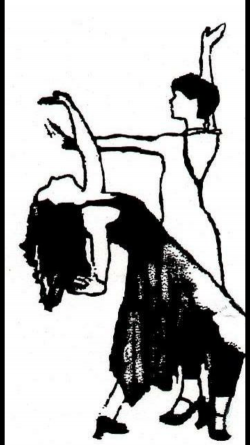Dancing Classes Come and visit us!
Don't hesitate to learn all about our dancing classes 860-306-5678 ask Melissa email terpsichoredancetheatre@gmail.com new location!
.
Casting
In this case Salvador Dali used a mold where he poured bronze to cast the sculpture of Terpsichore- the muse of dance, using the lost wax process. Salvador Domingo Felipe Jacinto Dali known as Salvador Dali was a Spanish surrealist artist born in 1904 in Figueres, Catalonia, Spain and died in 1989 in Figueres, Spain. Renaissance masters were the artists who influenced the art of Salvador Dali. Salvador Dali was a skilled draftsman. His love for luxury, his eccentric personality and imaginative art made Salvador Dali an artist which critics talked about. One of his famous art works was Persistence of Memory- a surrealist masterpiece. Picasso, Migrate, Miro, Luis Buñuel, and Federico Garcia Lorca were among the artists who influenced him during his life as an artist and also influenced his personality. As a side note, Dali adopted his curled moustache from Diego Velazquez. 2. (Salvador Dali)
Homage to Terpsichore was made by Salvador Dali in 1984. The medium is sculpture bronze lost wax process. The original drawing was in 1977. Terpsichore is one of the nine Greek mythological muses. This goddess of dance, ballet and chorus relates her name to the world of dance. Although this goddess is usually shown sitting down, holding a lyre, around her ballerinas, but Salvador Dali deviated from this norm.
Salvador Dali and his Homage to Terpsichore is a brilliant and delightful tribute to this goddess of dance. This art exhibition was located in Art Science Museum, Singapore in 2011. 1. (Chopinand). This art is a sculpture that makes part of his work recompilation in the book “The Hard and The soft”, that shows many of his main art of his long career.
Dali casted the metal by the lost-was process, pouring molten bronze into a clay casing containing a previous modeling design in wax of the sculpture. During the renaissance period, many artists studied the Greek method at the time to build up standing figures and Dali was one of them. It is clear in his Homage to Terpsichore that Dali used the technique called contrapposto where the body set keeping a S-shape curve through a play of opposites. The two statues are making a classical ballet figure where on the dark statue she keeps her left leg relaxed and the right leg keeping the weight of the body with her left hip raises and her left shoulder is raised to counterbalance her body. This is perfect contrapposto position. Now for the yellow-gold statue, the contrapposto position consists on making the beginning of a step dancing- ballet where her feet are pointed with her right leg and arm ready to make to next step and keeping the weight of the body and her left leg relaxed although pointed her foot. In this case her right hip is raised. I think Dali did make and excellent tribute to Terpsichore. It is quite beautiful.
Dali was influenced by surrealist movements and in this homage, I can see the way the unconscious of himself is reflected in his work. No faces, one body with extremes muscle indentations(dark one) and the other one smooth lines. If I would be with this sculpture in person, it pushes me to want to touch it and to feel the smoothness of the surface. It is really beautiful. Dali was a master.
Terpsichore Dance and Theatre Simsbury, CT made this name for its studio, knowing that the goddess of dance would be an excellent homage to the dancing in Simsbury, CT.

References
1. Chopinand. Salvador Dali at the ArtScience Museum, Singapore. 15 July 2011. 9 December 2017.
2. "Salvador Dali." n.d. Biography.com. 8 12 2017.

